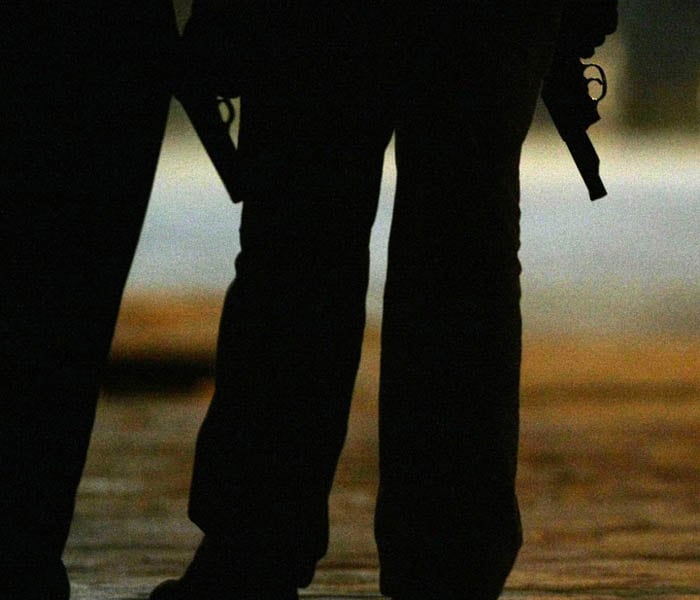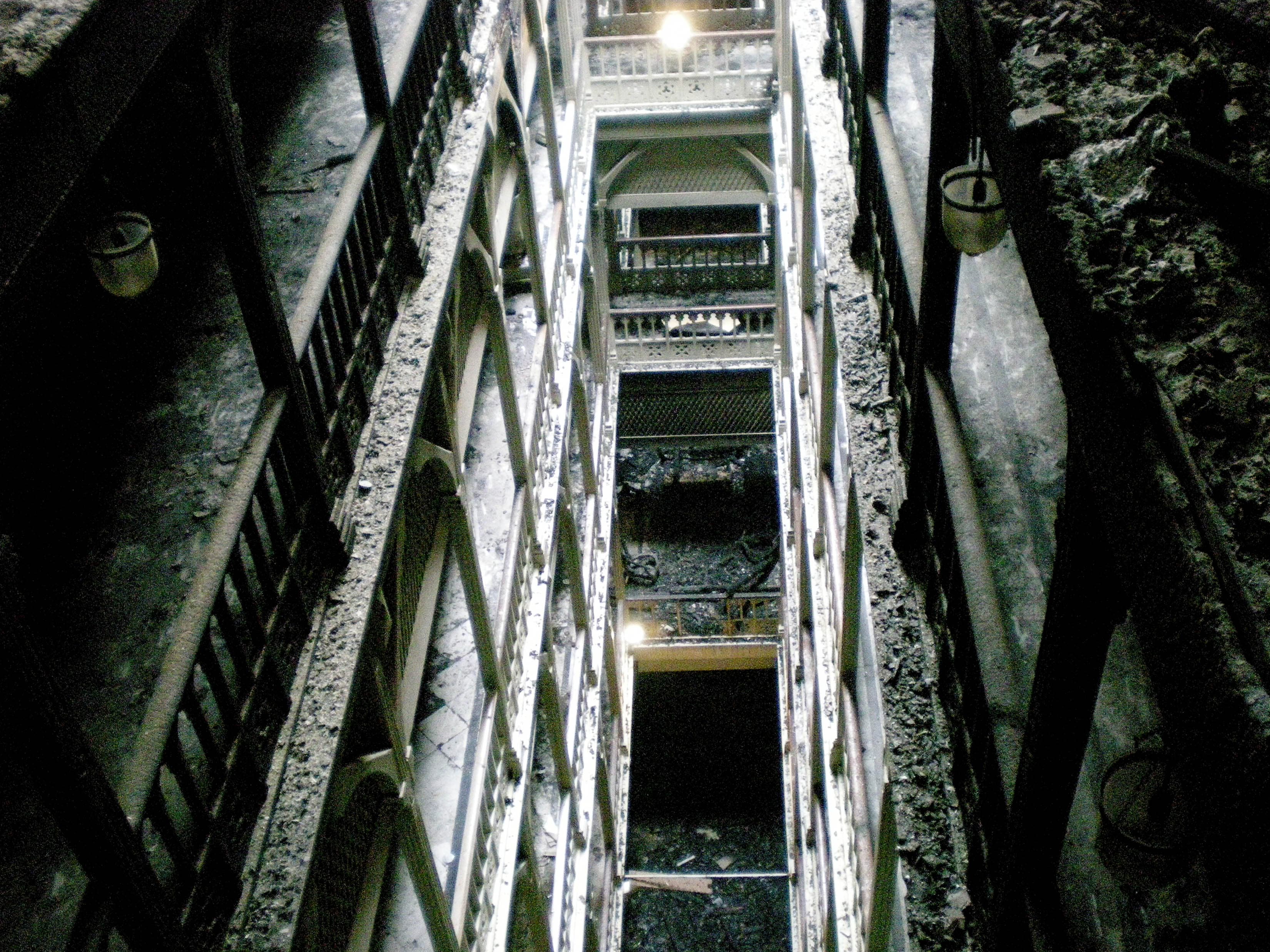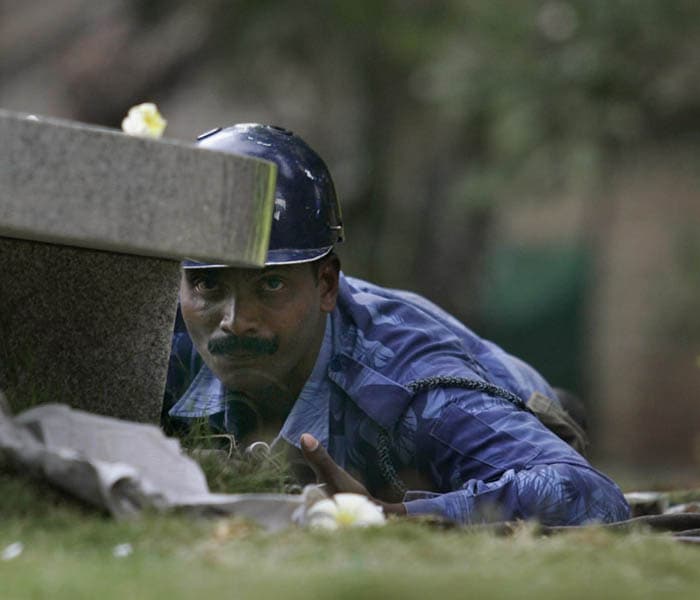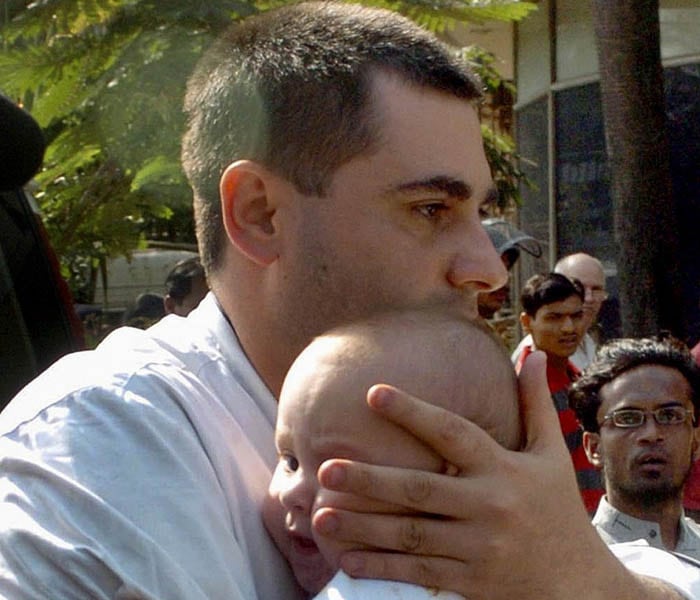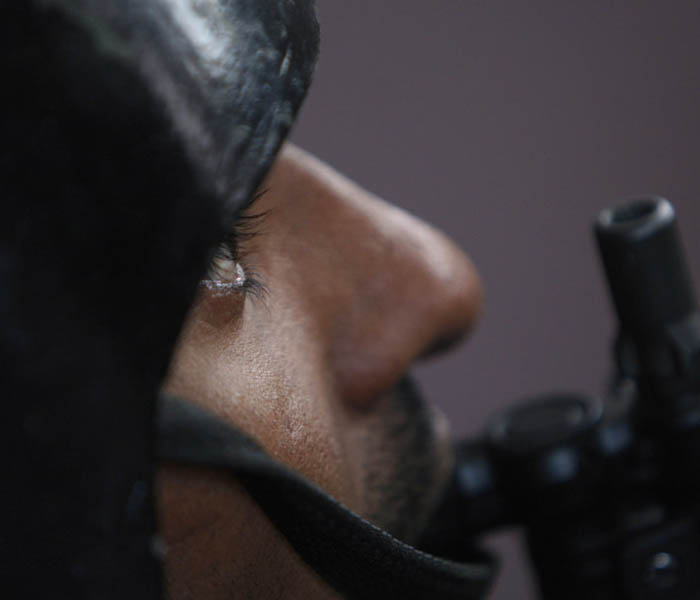26/11: How terror struck Mumbai
November 26, 2008 witnessed a highly detailed terror attack that left an entire nation in shock and nearly 200 people dead in a span of three days.
-
On Wednesday night, November 26, 2008,Mumbai became the target of a ferocious terror attack. Nearly 10 young men entered the city through the sea route, armed with weapons and ammunition, and spread out to several prime locations to begin their attacks.
Lobbing grenades and firing weapons, they entered hotels, a railway station and several other buildings, creating a hostage situation and killing scores and wounding even more.
India has been shaken repeatedly by terror attacks blamed on militants in recent years, but this was more sophisticated — and more brazen. Through this photofeature, we revisit the painful memories of the well-orchestrated terror attacks on Mumbai.(AFP photo) -
A highly detailed, finely plotted terror attack that left an entire nation in shock. Nearly 200 people were killed in a span of three days.
The terrorists came via boats and mainly targeted the southern portion of Mumbai. Shooting at anybody in sight, the terrorists were on a mission to take as many lives and cause as much damage as they could.(AFP photo) -
The gruesome terror attacks began on 26th November and continued till 29th November, where Indian security services killed 9 out of 10 terrorists and captured Ajmal Amir Kasab, alive to regain control of South Mumbai terror sites i.e. the Leopold Café, the Chhatrapati Shivaji Terminus, the Taj Mahal, the Oberoi & Trident, Cama Hospital and Nariman House.(AP photo)
-
About 30 bodies were recovered from the Taj in an aftermath of bullets that shattered glass, and lives.
The famous Japanese restaurant Wasabi was gutted, as was the sixth floor of the heritage wing where the four terrorists headquartered themselves.(AFP photo) -
It was inside these shattered bay windows of the upper lobby that many were shot at point blank range... several were then dragged to the 19th floor and held hostage for several hours. Those fortunate, finally managed to escape to safety.
This undated handout photo provided by the Mumbai Fire Brigade received on December 4, 2008 shows the view of the sea front from within the burnt out portion of the Taj Mahal hotel, which was set on fire during the terror attacks in Mumbai.(AFP photo) -
With the attack on the Taj, the very heart of Mumbai had been struck. The symbol of opulence which had been standing tall till now, was now broken and burnt. A day after the siege at the Taj Mahal hotel, authorities were still removing corpses.(AFP photo)
-
On Wednesday, November 26, 2008, terrorists stormed the Trident hotel. They entered through the front porch and opened fire.
They then ran up to the upper lobby, causing the most amount of destruction, especially in the restaurants- Kandahar and Tiffin.
Nearly 30 people were shot dead, apart from the two terrorists at the Trident-Oberoi in Mumbai. -
After a 39-hour ordeal, the NSG finally succeeded in flushing out the terrorists from the Oberoi Trident Hotel on Friday, November 28, 2008.
Freed hostages flash the victory symbol from the window of their bus following their rescue by security forces.(AFP photo) -
After Ville Parle, the terrorists turned their guns on the Cama hospital and were holed up there till policemen shot them dead. Among the 14 policemen killed by the terrorists was the Chief of the Anti-Terrorism Squad, Hemant Karkare who headed the charge at the Cama Hospital.(AFP photo)
-
'The customer is king'- the staff at the Taj Mahal Hotel and Oberoi Trident did not forget this marketing rule even as gun-totting terrorists wreaked havoc. The employees of both hotels went beyond their call of duty to save their guests during the terror attacks.
A card with a message in remembrance of those who lost their lives in the attack, stands inside The Taj Mahal Hotel in Mumbai on December 22, 2008. (AFP photo) -
Commandos ended a siege of the luxury Oberoi Trident Hotel on Friday while other forces rappelled from helicopters to storm a besieged Jewish center, two days after a chain of militant attacks across India's financial center left people dead and the city in panic.
Two men came on a scooter at Nariman House, near the Bootleggers Pub in Colaba and hurled a grenade at a nearby petrol pump. The grenade missed the petrol reservoir but destroyed the facade of the station. The terrorists then ran into the Nariman House building behind the petrol pump, which is a Jewish residential building.
Here in this picture, the Nariman House Jewish cultural centre is seen through a window in Mumbai on December 24, 2008. (AFP photo) -
The Nariman House siege showed the ambitiousness of the terror plot. The terrorists sought not only to hurt the Indian government but also wanted to tell the world that they were trying to avenge their Palestinian brothers. Hence, the Israeli target. (AFP photo)
-
The Nariman House terror attack in Mumbai killed six people, all of them from the Jewish community, including two Rabbis. It was an assault that, for the first time, exposed the vulnerability of Jews in India.
A National Security Guard (NSG) commando aims toward a window after an explosion on the fourth floor of the Nariman House where suspected militants were hiding on November 28, 2008.(AFP photo) -
A National Security Guard commando is seen after securing a floor during an operation against terrorists holed up at Nariman House, the headquarters of the ultra-orthodox Jewish outreach group Chabad Lubavitch, in Colaba in Mumbai, on November 28, 2008.(AP photo)
-
On Friday, November 28, 2008, the third day of an extended battle, when repeated attempts were being made to flush out the terrorists, National Security Guard commandos came down a rope, from a helicopter to reach the top of the Nariman house, as access was becoming difficult. Security personnel were at constant war with the terrorists and after a tireless 2 day encounter, the incident ended with 2 terrorists killed and 5 hostages dead.
Indian National Security Guard chief J K Dutt gave details of the aftermath at the Nariman House Jewish centre to NDTV: Three of the hostages were found dead on the building's second floor, killed by the gunmen who then moved upstairs. The other two hostages were found dead on the fourth floor, where the gunmen were eventually killed.(AFP photo) -
File photo of Israeli Rabbi Gabriel Holtzberg and wife Rivka. They were killed in the terror attack at the Jewish centre in Mumbai. The militants killed Rabbi Gavriel Holtzberg, 29, and his wife Rivka, 28, who ran the Chabad-Lubavitch centre at Nariman House, and their four guests. Members of the orthodox Chabad-Lubavitch order who have now taken charge of the building said that since the central structure of the five-storey building is more or less intact, the building need not be demolished because the Jews now have sentimental attachment to the building.(AFP photo)
-
The couple's two-year-old son, Moshe, managed to escape with his nanny.
Moshe turned 2 the day his parents bodies were brought out of Nariman House. The toddler was saved by his tears as his captors, irritated by his relentless howling, sent him out with his nanny.
This undated handout photo received on December 1, 2008 courtesy of Chabad.org shows Moshe Holtzberg with his father Rabbi Gavriel.(AFP photo) -
A man reads a newspaper at a roadside stall in New Delhi on November 28, 2008. Indian newspapers slammed the government and intelligence agencies for failing to prevent the Mumbai attacks, saying the country's anti-terrorism forces were ill-prepared for the militants. (AFP photo)



